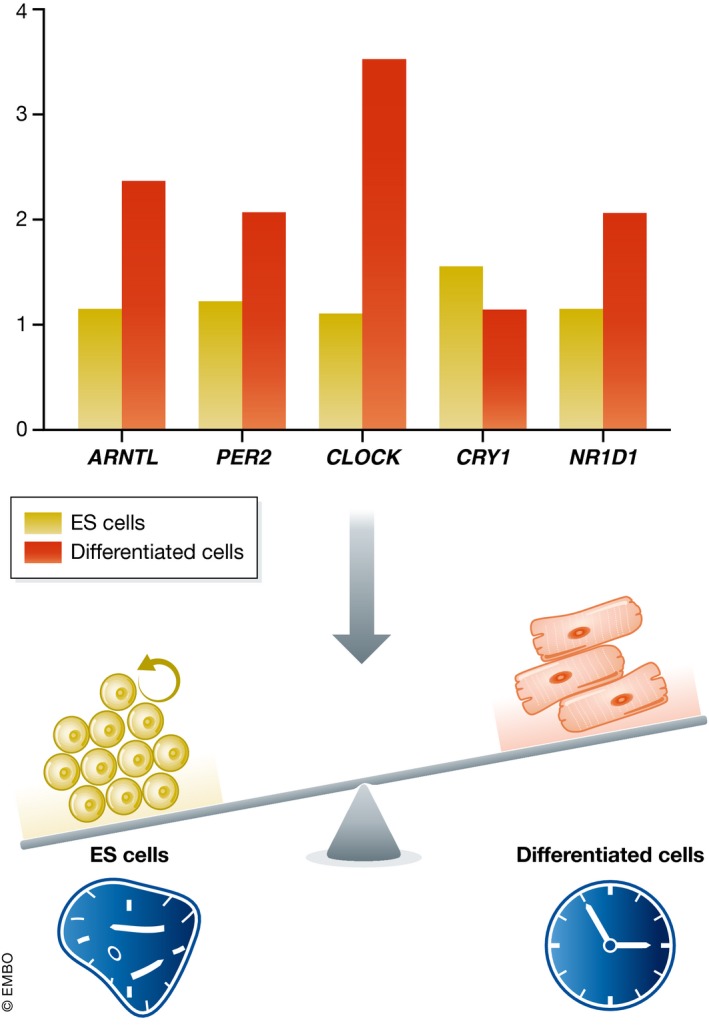Tissue stem cells have an internal circadian clock that changes with aging
Tissue stem cells have an internal circadian clock that changes with aging
Aged stem cells reprogram their daily rhythmic functions to adapt to stress. Solanas G, Peixoto FO, Perdiguero E, Jardí M, Ruiz-Bonilla V, Datta D, Welz PS, Caballero JM, Sassone-Corsi P, Muñoz-Cánoves P*, Benitah SA*. Cell 170:678-692, 2017. DOI: 10.1016/j.cell.2017.07.035.
Abstract
Normal homeostatic functions of adult stem cells have rhythmic daily oscillations that are believed to become arrhythmic during aging. Unexpectedly, we find that aged mice remain behaviorally circadian and that their epidermal and muscle stem cells retain a robustly rhythmic core circadian machinery. However, the oscillating transcriptome is extensively reprogrammed in aged stem cells, switching from genes involved in homeostasis to those involved in tissue-specific stresses, such as DNA damage or inefficient autophagy. Importantly, deletion of circadian clock components did not reproduce the hallmarks of this reprogramming, underscoring that rewiring, rather than arrhythmia, is associated with physiological aging. While age-associated rewiring of the oscillatory diurnal transcriptome is not recapitulated by a high-fat diet in young adult mice, it is significantly prevented by long-term caloric restriction in aged mice. Thus, stem cells rewire their diurnal timed functions to adapt to metabolic cues and to tissue-specific age-related traits.

